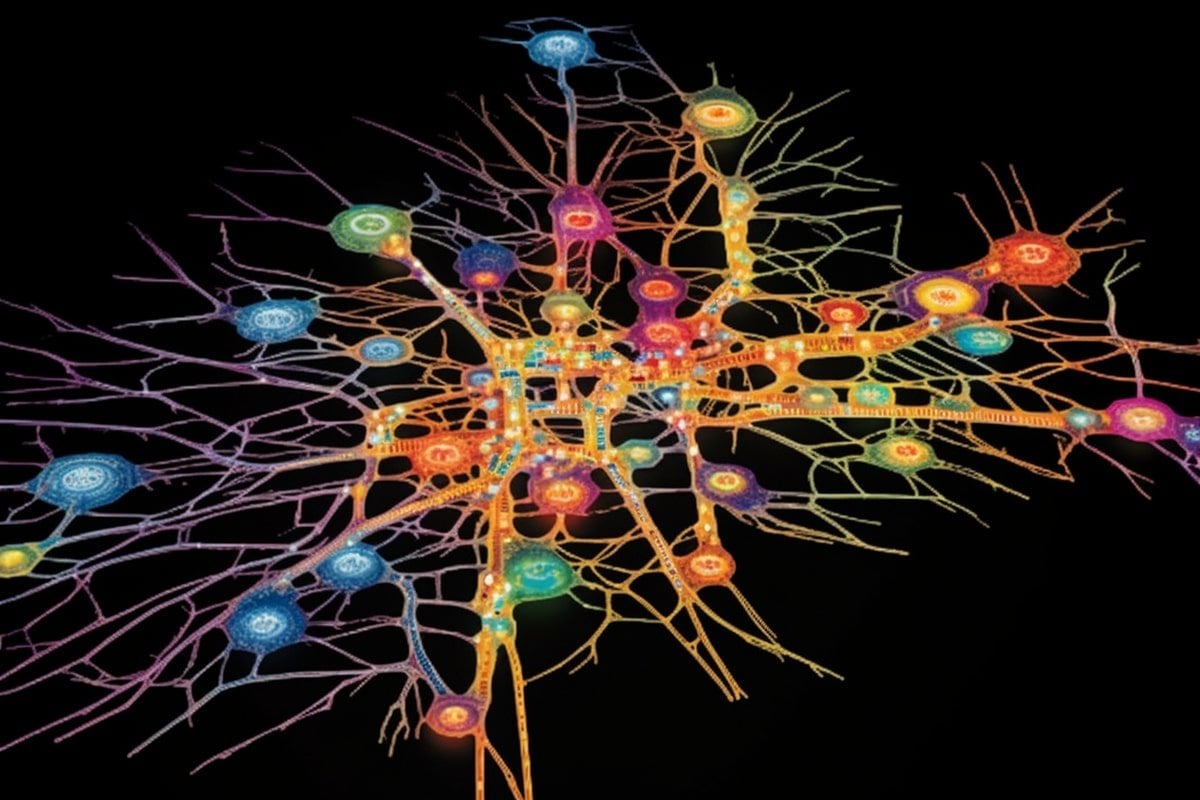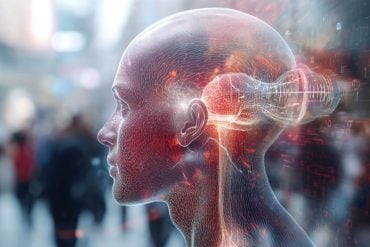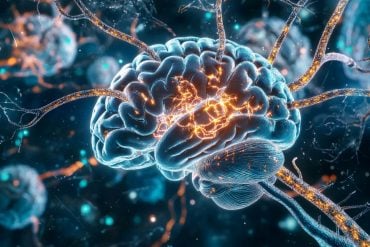Summary: Researchers unveiled key organizational principles in the brain, thanks to an intricate mapping of neurotransmitter receptors.
The team, studying macaque brains, provided a deeper understanding of how our brain differentiates between internally and externally stimulated thoughts and emotions.
Their comprehensive dataset, now publicly accessible, offers a unique perspective into the micro and macro workings of the brain.
The findings not only promise to enhance our understanding of normal brain functionality but could also guide the development of new treatments targeting specific brain functions.
Key Facts:
- The team has mapped neurotransmitter receptors in macaque brains, a breakthrough that could help us understand how the brain differentiates between internal and external stimuli.
- A detailed map of these ‘traffic lights’ of the brain could open the door to understanding brain functions in depth and potentially guide the development of new treatments.
- The comprehensive dataset created, which has been made publicly available, links different scales of neuroscience and could help bridge the gap between microscopic and whole-brain neuroscience studies.
Source: University of Bristol
Receptor patterns define key organizational principles in the brain, scientists have discovered.
An international team of researchers, studying macaque brains, have mapped out neurotransmitter receptors, revealing a potential role in distinguishing internal thoughts and emotions from those generated by external influences.

The comprehensive dataset has been made publicly available, serving as a bridge linking different scales of neuroscience – from the microscopic to the whole brain.
Lead author Sean Froudist-Walsh, from the University of Bristol’s Department of Computer Science explained: “Imagine the brain as a city. In recent years, brain research has been focused on been studying its roads, but in this research, we’ve made the most detailed map yet of the traffic lights – the neurotransmitter receptors – that control information flow.
“We’ve discovered patterns in how these ‘traffic lights’ are arranged that help us understand their function in perception, memory, and emotion.
“It’s like finding the key to a city’s traffic flow, and it opens up exciting possibilities for understanding how the normal brain works.
“Potentially in the future, other researchers may use these maps to target particular brain networks and functions with new medicines.
“Our study aimed to create the most detailed map yet of these ‘traffic lights’.”
The team used a technique called in-vitro receptor autoradiography to map the density of receptors from six different neurotransmitter systems in over 100 brain regions.
To find the patterns in this vast data, they applied statistical techniques and used modern neuroimaging techniques, combined with expert anatomical knowledge. This allowed them to uncover the relationships between receptor patterns, brain connectivity, and anatomy.
By understanding the receptor organisation across the brain, it is hoped new studies can better link brain activity, behaviour, and the action of drugs.
Moreover, because receptors are the targets of medicines, the research could, in the future, guide the development of new treatments targeting specific brain functions.
Dr Froudist-Walsh added: “Next, we aim to use this dataset to develop computational models of the brain.
“These brain-inspired neural network models will help us understand normal perception and memory, as well as differences in people with conditions like schizophrenia or under the influence of substances like ‘magic mushrooms’.
“We also plan to better integrate findings across species—linking detailed circuit-level neuroscience often conducted in rodents, to large-scale brain activity seen in humans.”
Creating openly-accessible maps of receptor expression across the cortex that integrate neuroimaging data could speed up translation across species.
“It is being made freely available to the neuroscientific community via the Human Brain Project’s EBRAINS infrastructure, so that they can be used by other computational neuroscientists aiming to create other biologically informed models,” added Nicola Palomero-Gallagher, HBP researcher at the Forschungszentrum Jülich and senior author of the paper.
The global team of researchers are from University of Bristol, New York University, Human Brain Project, Research Center Julich, University of Dusseldorf, Child Mind Institute and Universite Paris Cite.
About this neuroscience research news
Author: Laura Thomas
Source: University of Bristol
Contact: Laura Thomas – University of Bristol
Image: The image is credited to Neuroscience News
Original Research: Open access.
“Gradients of neurotransmitter receptor expression in the macaque cortex’” by Sean Froudist-Walsh et al. Nature Neuroscience
Abstract
Gradients of neurotransmitter receptor expression in the macaque cortex’
Dynamics and functions of neural circuits depend on interactions mediated by receptors. Therefore, a comprehensive map of receptor organization across cortical regions is needed. In this study, we used in vitro receptor autoradiography to measure the density of 14 neurotransmitter receptor types in 109 areas of macaque cortex.
We integrated the receptor data with anatomical, genetic and functional connectivity data into a common cortical space. We uncovered a principal gradient of receptor expression per neuron. This aligns with the cortical hierarchy from sensory cortex to higher cognitive areas.
A second gradient, driven by serotonin 5-HT1A receptors, peaks in the anterior cingulate, default mode and salience networks. We found a similar pattern of 5-HT1A expression in the human brain. Thus, the macaque may be a promising translational model of serotonergic processing and disorders.
The receptor gradients may enable rapid, reliable information processing in sensory cortical areas and slow, flexible integration in higher cognitive areas.






